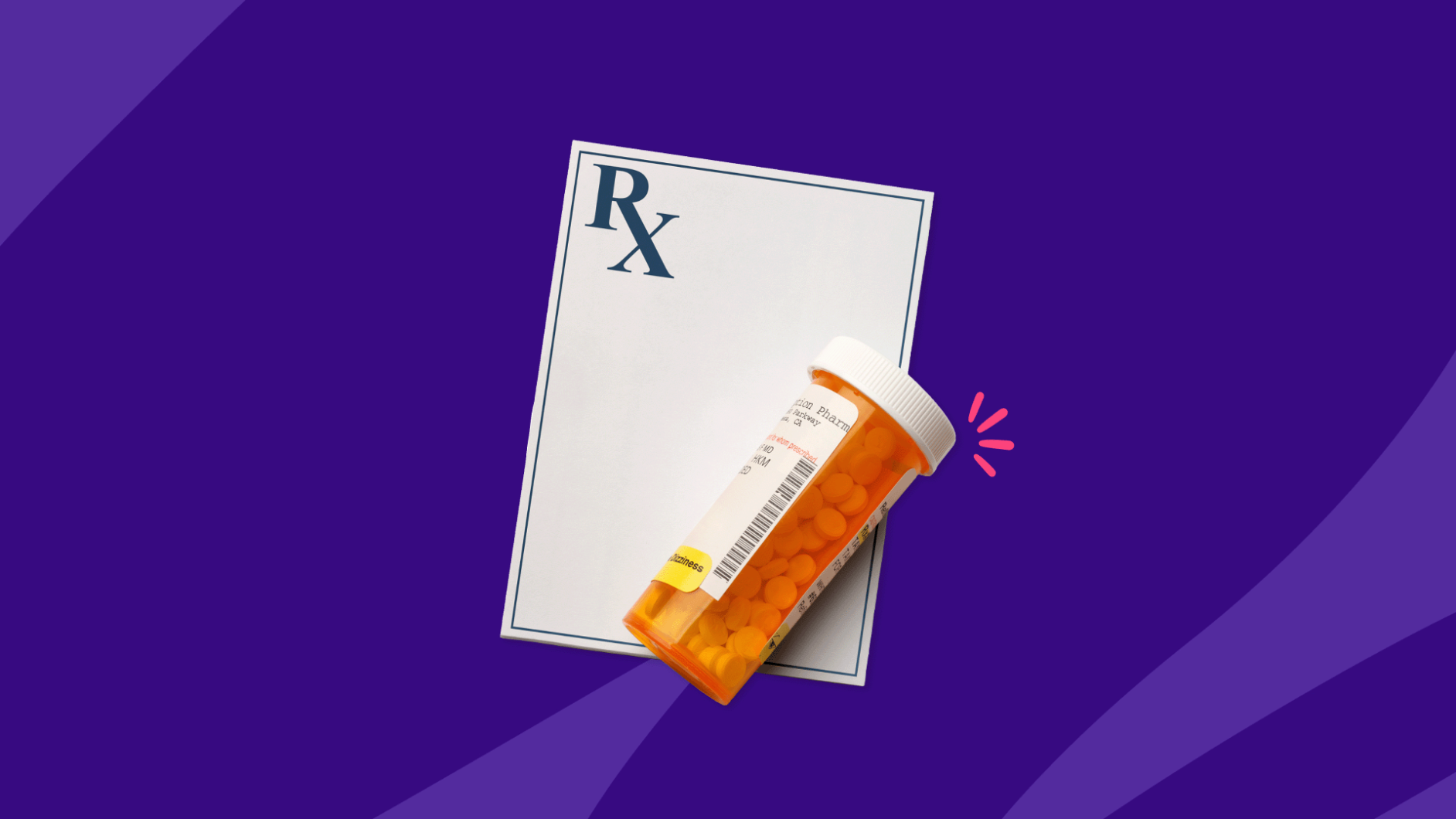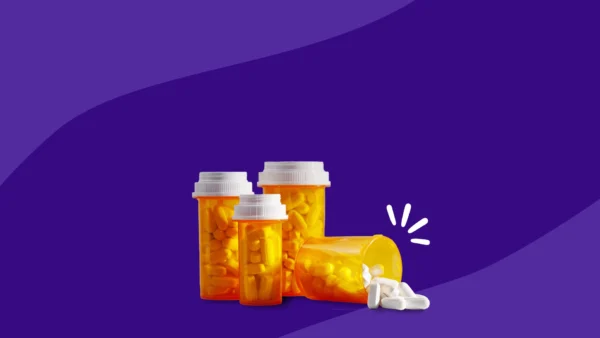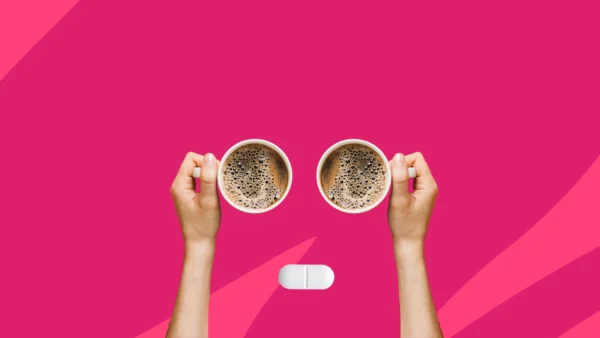Common chlorthalidone side effects | Serious side effects | Electrolyte imbalances | Orthostatic hypotension | Side effects timeline | Contraindications | Warnings | Interactions | How to avoid side effects | How to treat side effects
Chlorthalidone is a generic prescription diuretic, or “water pill,” primarily used to lower blood pressure in people with high blood pressure. It’s also used as an add-on drug to help treat fluid retention (edema) in those with heart failure, cirrhosis of the liver, or who are taking drugs like corticosteroids or estrogen. Also prescribed as brand-name Thalitone, chlorthalidone is similar to thiazide diuretics. Like thiazide diuretics, chlorthalidone increases the elimination of water and salts through urination, which lowers blood pressure by reducing blood volume. Chlorthalidone is considered more effective at reducing blood pressure than thiazide diuretics, but because of its adverse effects, healthcare providers are more likely to prescribe hydrochlorothiazide for hypertension.
RELATED: What is chlorthalidone?
Common side effects of chlorthalidone
The most common side effect of chlorthalidone is electrolyte imbalances, which are changes in the levels of potassium and sodium. Other common side effects of chlorthalidone are:
- Low potassium
- Low sodium
- Low chlorine
- Elevated uric acid levels in the blood
- Elevated blood sugar
- Low blood pressure
- Loss of appetite
- Nausea
- Vertigo
- Dizziness
- Constipation
- Headache
- Diarrhea
- Increased sensitivity to sunlight
- Skin rash
- Itching
Serious side effects of chlorthalidone
Chlorthalidone’s most severe side effects are:
- Severely low potassium
- Severe electrolyte imbalances
- Irregular heartbeats
- Swollen pancreas
- Low blood cell counts
- Kidney problems
- Kidney failure
- Gout attacks
- Fainting or lightheadedness when standing up (orthostatic hypotension)
- Worsening of lupus
- Severe allergic reactions
Chlorthalidone and electrolyte imbalances
Although no one has determined the incidence, electrolyte imbalance is commonly experienced in people taking chlorthalidone. Low sodium, low potassium, low magnesium, low chlorine, and high calcium are all potentially serious medical conditions that can cause cardiovascular side effects, as well as problems with muscles and nerves. For this reason, healthcare providers typically will perform regular blood tests to monitor chlorthalidone’s effects on electrolytes.
Chlorthalidone and orthostatic hypotension
Orthostatic or postural hypotension happens when the brain has problems regulating blood pressure. In particular, blood pressure does not compensate when someone stands up or sits up. The brain is quickly deprived of blood, causing dizziness, lightheadedness, and, in some cases, passing out. Although the incidence has not been determined, orthostatic hypotension is considered a serious side effect of chlorthalidone. Seniors are more vulnerable than younger adults. Alcohol, illegal drugs, and blood pressure medications can all make the condition worse. Because there’s a high risk for accidents or injury, always inform the prescribing healthcare provider if standing up causes dizziness or fainting.
How soon do chlorthalidone side effects start?
Many of the mild side effects of chlorthalidone can occur early in treatment, such as nausea, vomiting, diarrhea, and dizziness. Electrolyte imbalances, however, are usually delayed side effects, as are appetite loss, blood disorders, pancreatitis, and orthostatic hypotension.
How long do chlorthalidone side effects last?
Some of chlorthalidone’s side effects may improve over time. Minor side effects will generally go away in about four to five days after the last dose is taken. Minor problems with electrolytes can usually be corrected by increasing salt or potassium intake and won’t require stopping chlorthalidone treatment. Some more serious side effects, however, may require chlorthalidone to be stopped, at least temporarily. The good news is that electrolyte abnormalities—even serious ones—are usually quickly reversible with appropriate treatment.
What are the long-term side effects of chlorthalidone?
Chlorthalidone is intended to be used for months or years to control blood pressure. No side effects specifically due to long-term use have been identified as long as regular blood tests are performed.
Chlorthalidone contraindications
Chlorthalidone is prohibited in people with:
- Anuria, or a failure to produce urine
- A known allergy to chlorthalidone
- A known allergy to sulfa drugs (sulfonamides)
Pregnancy
Chlorthalidone can be used during pregnancy, but it does have risks. While it hasn’t been shown to cause birth defects, it can cause problems in a newborn, including jaundice and blood problems. It can also reduce the transfer of nutrients across the placenta, so it is generally avoided in pregnant women who already have placental complications.
Breastfeeding
Chlorthalidone can be taken by women who are breastfeeding, but it is considered risky. Chlorthalidone crosses into breast milk and could cause problems in a nursing infant. Women may be advised by their healthcare provider to switch to a different blood pressure medication.
Children
Chlorthalidone is not FDA-approved for use in anyone younger than 18 years of age.
Seniors
Clinical trials showed no difference in the effectiveness or safety of chlorthalidone in older adults versus younger adults. However, seniors may be more vulnerable to dehydration, electrolyte imbalances, or side effects of diuretics, so healthcare providers may start them on lower doses.
Chlorthalidone warnings
All diuretics have significant risks because they deplete the body of essential water and electrolytes. For this reason, treatment will involve regular blood tests and check-ins to make sure everything is okay.
Cautions
Some pre-existing medical conditions can be worsened by chlorthalidone, so it’s used cautiously in people with:
- Dehydration: Chlorthalidone can worsen any existing dehydration and is rarely used until any problems with dehydration are corrected.
- Electrolyte imbalance: Chlorthalidone will worsen electrolyte imbalances, so these must be corrected before chlorthalidone is taken.
- Liver disease: Electrolyte imbalance can cause hepatic coma in people with reduced liver function.
- Heart rhythm problems: Electrolyte imbalance can worsen irregular heartbeats.
- Seizure disorders: Electrolyte imbalance can bring on seizures.
- Kidney disease: Dehydration caused by diuretics can lead to a buildup of wastes in the blood of people with compromised kidney function.
- Diabetes: Chlorthalidone can raise blood sugar.
- High uric acid levels: Chlorthalidone can raise uric acid levels in the blood.
- Gout: Increased uric acid levels can bring about gout attacks.
- Pancreatitis: Chlorthalidone can cause pancreas swelling and other problems in people with a history of pancreatitis.
- Orthostatic hypotension: Chlorthalidone is used cautiously in people with risk factors for orthostatic hypotension, including those who have had a type of nerve surgery called a sympathectomy.
- Lupus: Chlorthalidone can theoretically worsen systemic lupus erythematosus (SLE) because thiazide diuretics can worsen it.
Abuse and dependence
Chlorthalidone is not associated with drug abuse, drug dependency, or withdrawal.
Overdose
Call a poison control center or get emergency medical treatment if too much chlorthalidone is taken. The greatest risks with a chlorthalidone overdose are dehydration and electrolyte abnormalities. Symptoms of an overdose include nausea, weakness, and signs of electrolyte abnormalities, including tiredness, drowsiness, and muscle weakness. The maximum dosage is 200 mg per day for people with edema, but doses are lower for people with high blood pressure. For all practical purposes, the prescribed dose should be considered the maximum dose that a person should take per day.
Chlorthalidone interactions
Chlorthalidone has several drug interactions that may cause healthcare providers to avoid certain drugs, prescribe different doses, or watch more closely for side effects. These include:
- Other diuretics: Combining more than one diuretic raises the risk of dehydration and electrolyte imbalances.
- Antihypertensives: Blood pressure drugs could worsen orthostatic hypotension brought on by chlorthalidone.
- Diabetes medications and insulin: Chlorthalidone can raise blood sugar, so insulin doses or diabetes drug dosages may need to be increased.
- Drugs that cause electrolyte imbalances: Some drugs, such as digoxin, can cause electrolyte problems. These will be worsened when combined with chlorthalidone.
- Drugs that raise blood pressure: Some drugs may cause blood pressure to go up and partly neutralize the therapeutic effects of chlorthalidone. These include stimulants, ADHD medications, migraine drugs, decongestants, NSAIDs, and caffeine.
- Alcohol: Alcohol can worsen orthostatic hypotension caused by chlorthalidone.
- Photosensitizing agents: Some drugs, like porfimer, are used to make skin or tissues more sensitive to ultraviolet. They are used right before phototherapy treatments. Combining them with chlorthalidone might make the tissues even more vulnerable to UV damage.
How to avoid chlorthalidone side effects
Chlorthalidone has relatively few possible side effects, but some can quickly evolve into serious problems. Here are a few tips to minimize various issues when taking this drug.
1. Don’t take too much chlorthalidone
As might be expected, taking too much chlorthalidone can be a problem. Here’s how to make sure that doesn’t happen:
- Follow all the instructions given by the prescriber or written on the prescription label.
- Never take more than the prescribed dose.
- Always follow the dosing schedule. Don’t get ahead.
- Take each dose at the same time every day.
- Keep track of which day tablets are taken if they’re supposed to be taken every other day. Ask a pharmacist for an app, schedule, or another way to keep track of the days that tablets are taken.
- If a dose is missed, it can be taken when remembered as long as it is closer to the time of the missed dose than the next dose. If it’s closer to the next dose, skip the missed dose and take the next dose on schedule.
Chlorthalidone can last in the body for a few days. It can quickly build up and cause serious problems if it’s not taken correctly.
2. Tell the prescriber about all medical conditions
The surest way to prevent serious side effects is to make sure the prescriber has a complete medical history. The prescriber will particularly need to know about:
- Dehydration
- Electrolyte problems
- Heart problems
- Diabetes
- High cholesterol
- Gout
- Kidney disease
- Liver disease
- Any history of pancreatitis
- Any history of orthostatic hypotension
- Pregnancy or plans to become pregnant
- Breastfeeding or plans to breastfeed
3. Give the prescriber a list of drugs being taken
Other sources of side effects are drug interactions. It’s a good idea to carry a list of prescription drugs, over-the-counter medications, and supplements being taken. Share that list whenever getting or filling a prescription in order to help avoid problematic drug combinations.
4. Try to drink fluids to stay hydrated
Dehydration is always a risk with diuretics. The prescriber may give instructions about how many drinks should be consumed each day. Follow those instructions. In other cases, just make sure to drink fluids regularly, particularly when feeling thirsty.
5. Take chlorthalidone tablets with food
To avoid digestive system troubles, take chlorthalidone after eating food.
6. Stand up slowly
To keep from feeling dizzy or lightheaded when standing up, try standing up slowly and gradually.
7. Protect the skin from the sun
Chlorthalidone increases the risk of sunburn. When going outdoors, use a high SPF sunscreen or cover as much skin as possible with clothing.
How to treat side effects of chlorthalidone
If chlorthalidone causes problems, don’t get upset. Some can be managed at home. The serious side effects can usually be reversed by stopping the medicine and getting medical help.
Lightheadedness and dizziness
The only remedy for lightheadedness and dizziness is to sit down and wait it out. Otherwise, there’s a risk of falling, having an accident, or getting injured. Report the problem to the prescriber.
Nausea
Eat bland and smaller meals when feeling nauseous. If nausea is accompanied by vomiting, drink fluids to avoid dehydration. If vomiting doesn’t stop or gets worse, contact a healthcare provider.
Headache
Headaches can be handled with fluids, rest, or pain relievers. Before taking an over-the-counter pain reliever, talk to the prescribing healthcare provider first. If headaches are severe or don’t go away, get medical advice from a healthcare professional.
Dehydration
For mild to moderate dehydration, drinking fluids will usually help. Symptoms of mild dehydration can be obvious: thirst and dry mouth. Severe dehydration may require medical help. Symptoms of severe dehydration include:
- Excessive thirst
- Dry mouth and lips
- Feeling tired
- Dizziness
- Headache
Low sodium levels (hyponatremia)
Call a healthcare professional or get medical help when noticing the following signs of low sodium:
- Weakness
- Loss of coordination
- Confusion
- Vomiting
- Headache
- Problems balancing
Low potassium levels (hypokalemia)
Low potassium is a serious problem. Call a healthcare provider if you experience any of the following symptoms:
- Cramps
- Heartbeat irregularities
- Constipation
- Excessive thirst
- Tingling feelings
- Numbness
- Muscle weakness
Kidney problems
Call the prescribing healthcare provider or get medical help at any sign that chlorthalidone is hurting the kidneys, including:
- Decreased urination
- Painful urination
- Dark urine
Allergic reactions
A serious allergic reaction means that chlorthalidone needs to be stopped. Get emergency medical treatment when noticing symptoms such as:
- Hives
- Swelling of the face, mouth, lips, tongue, or throat
- Trouble breathing
- Fever
- Headache
- Sores in the mouth
- Sores on the genitals
- Eye pain
- Red eyes
- Skin blisters
- Peeling skin
- Skin pain
Sources
- Chlorthalidone, Epocrates
- Chlorthalidone, StatPearls
- Chlorthalidone drug summary, Prescriber’s Digital Reference
- Chlorthalidone tablet prescribing information, U.S. National Library of Medicine
- Electrolyte disturbances and seizures, Journal of Neurocritical Care
- Thiazide effects and side effects, Hypertension











